- JST Home
- /
- Strategic Basic Research Programs
- /
 ACT-X
ACT-X- /
- Research Director/
- Life Phenomena and Materials/
- [Life Phenomena and Materials] Year Started : 2024
[Life Phenomena and Materials] Year Started : 2024
Kazunari Aoki
The regulatory mechanism of stemness through transcriptional networks
Grant No.:JPMJAX2421
Researcher
Kazunari Aoki

Assistant professor
Institue for Life and Medical Sciences
Kyoto University
Outline
Transcriptional networks play an important role in maintaining stemness. Although the cell type-specific transcription factors that form the transcription networks have been identified in various types of cells, the universal mechanisms that control stemness through the transcription networks are not fully understood. I identify novel stemness regulators using genetic screening that can comprehensively explore functional cooperative relationships between genes.
Takahiro Iguchi
Elucidation of the function of intracellular T cell receptors in anti-tumor responses
Grant No.:JPMJAX2422
Researcher
Takahiro Iguchi

Postdoctoral Researcher
Graduate School of Medicine
The University of Tokyo
Outline
T cells are well known for expressing a variety of T cell receptors (TCRs), with each cell displaying one unique receptor that recognizes specific antigens. However, I have discovered T cells that intracellularly conceal TCRs, which are different from those present on their surface, and these T cells exhibit high anti-tumor activity. This study aims to clarify the role of intracellular TCRs in anti-tumor immune responses.
Tomoki Ishibashi
Elucidation of adhesive molecule functions that link cellular and multicellular left-right asymmetries
Grant No.:JPMJAX2423
Researcher
Tomoki Ishibashi

Special Postdoctoral Researcher
BDR
RIKEN
Outline
Left-right asymmetric morphology is essential for organ function. Recently, left-right asymmetric cell polarity, termed cell chirality, has been identified and is thought to be the cause of organ-level left-right asymmetry. In this project, I aim to reconstruct autonomously twisting in vitro tubes using epithelial cells that clearly exhibit cell chirality. Furthermore, I will control the twisting direction by manipulating cell adhesion machinery and elucidate the role of adhesion mechanisms in the formation of left-right asymmetry.
Shohei Iyoshi
Pan-peritoneal treatment strategy for advanced ovarian cancer based on chemical biology and clinical omics
Grant No.:JPMJAX2424
Researcher
Shohei Iyoshi

YLC Designated Assistant Professor
Institute for Advanced Research
Nagoya University
Outline
Ovarian cancer is one of the most prognostically unfavorable tumors in the field of gynecologic oncology. One of the characteristic features of ovarian cancer is to advance by forming metastatic lesions called peritoneal dissemination especially at intraperitoneal adipose tissues such as the omentum and mesentery via accumulated ascites. In this study, I aim to develop a new treatment strategy that controls the pathology of advanced ovarian cancer accompanied by peritoneal dissemination by treating the entire intraperitoneal environment formed by the interaction between ovarian cancer cells, malignant ascites, and adipose tissue as a single ecosystem and comprehensively modifying this ecosystem.
Akiko Uyeda
Blood-brain communication in central nervous system disorders
Grant No.:JPMJAX2425
Researcher
Akiko Uyeda

Section Chief
National Insutitute of Neuroscience
National Center of Neurology and Psychiatry
Outline
The central nervous system communicates (CNS) with peripheral organs through humoral, cellular, and neuronal pathway. As some CNS disease risk genes have important role through the body, peripheral dysfunction caused by disruption of such risk genes possibly contribute to the development of CNS symptoms. However, the effect of peripheral dysfunction on neurological function have not been fully understood. This study is aimed at investigating whether and how peripheral environment regulates brain function in ASD. Specifically, I will identify blood-derived humoral factor that cause ASD symptoms and pursue the mechanism with focusing on effect of the factor on brain cells.
Aya Okuda
Development of protein ligation enzyme for novel protein engineering
Grant No.:JPMJAX2426
Researcher
Aya Okuda

Associate Professor
Institute for Integrated Radiation and Nuclear Science
Kyoto University
Outline
In this study, I will focus on plant-derived ligation enzymes with high activity, and establish the protein ligation technique using the enzymes to a practical level. Furthermore, I will develop the ligation technique into a method that enables ligation of various proteins, and apply it to a broad variety of proteins, allowing us to engineer novel and valuable proteins.
Yasuo Oguri
Elucidation of the molecular basis of the regulatory mechanisms of beige adipose progenitor cells
Grant No.:JPMJAX2427
Researcher
Yasuo Oguri
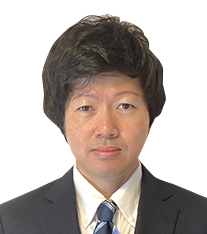
Senior Assistant Professor (Lecturer)
Division of Human Life and Environmental Sciences
Nara Women’s University
Outline
Beige fat cells are an inducible form of thermogenic fat cells that exist scattered throughout white adipose tissue. They are induced in response to external cues, including cold exposure and nutritional factors. Increased beige fat biogenesis has been reported to positively affect metabolic health. Increasing and activating beige fat cells is thus thought to contribute to the prevention and mitigation of lifestyle-related diseases, including obesity and diabetes. This study aims to clarify the regulatory mechanisms of beige adipose progenitor cells and to identify functional materials that increase energy expenditure by increasing these cells.
Takuya Kaneko
Wiring mechanism of vagal reflex circuits for brain-body communication
Grant No.:JPMJAX2428
Researcher
Takuya Kaneko

Designated Assistant Professor
Institute for Advanced Research
Nagoya University
Outline
The vagus nerve connects the brain to a wide array of internal body parts and regulates many esential functions of the body including swallowing, digestion, breathing, and heartbeat. However, the neural circuitry that enables the vagus nerve to independently regulate these diverse bodily functions remains poorly understood. I aim to visualize vagal reflex circuits controlling a specific bodily function by introducing a virus-mediated transsynaptic labeling approach to the vagus nerve of transparent larval zebrafish. By leveraging the powerful genetics of the zebrafish model, I will then determine the developmental mechanism that shapes the sophisticated neural circuitry.
Ryoji Kawakami
Identification of the molecular mechanism that facilitates the establishment of immunological self-tolerance after stem cell transplantation
Grant No.:JPMJAX2429
Researcher
Ryoji Kawakami

Program-specific assistant professor
Institute for Life and Medical Sciences
Kyoto University
Outline
Using a murine allogeneic hematopoietic stem cell transplantation model, I will elucidate functional factors that normalize the immune cell composition and restore self-tolerance in mice in which GVHD (graft-versus-host disease) pathology is suppressed by the co-transferred regulatory T cells. This includes investigating the tissue distribution of immune cells reconstituted by hematopoietic stem cell transplantation, the distribution of transferred or de novo regulatory T cells, and estimating cell-cell communication networks through comprehensive expression analysis of immune and non-immune cells. Our goal is to discover novel mechanisms for induction and expansion of regulatory T cell population that leads to establishment of immunological self-tolerance in patients receiving stem cell transplantation.
Miyako Shiraishi
Reconstitution of the archaeal DNA replication system
Grant No.:JPMJAX242A
Researcher
Miyako Shiraishi
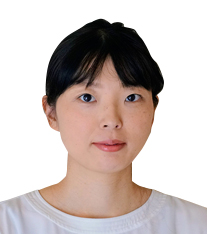
Assistant Professor
Graduate School of Pharmaceutical Sciences
Kyushu University
Outline
Cell-free nucleic acid synthesis is attracting increasing attentions in the fields in basic sciences, medical to biotechnology. However, current technologies have failed to achieve the same level of performance as cells in terms of versatility and efficiency. This study aims to identify previously unexplored genome functions related to DNA replication, elucidate mechanisms of the archaeal DNA replication, and ultimately reconstitute the archaeal DNA replication machinery in vitro. This will lead to the development of high-performance cell-free nucleic acid amplification technology that does not depend on the replication origin.
Tatsuya Suzuki
recerch analysis of mosquito saliva in arbovirus transmission and pathogenesis
Grant No.:JPMJAX242B
Researcher
Tatsuya Suzuki

Associate Professor
Graduate School of Medicine
Juntendo University
Outline
Mosquito saliva contains various secreted components that affect host vascular constriction, blood coagulation, platelet aggregation, inflammation, and immune responses. It has been shown that infection through mosquito bites or injection with mosquito saliva enhanced disease severity in several mosquito-borne viruses, however, the mechanisms underlying the role of mosquito saliva in viral transmission are unclear. In this study, I focus on mosquito saliva (which contains many unknown functional substances) that has not yet been analyzed in detail. This study aim to develop a new infectious disease control strategy that targets mosquito saliva through identification of functional molecules in mosquito saliva that are involved in enhancing viral infection.
Yuri Takada
Elucidation of the mechanism of protein complexes utilizing chemical molecules
Grant No.:JPMJAX242C
Researcher
Yuri Takada

Assistant Professor
SANKEN
The University of Osaka
Outline
Abnormalities in epigenetics are associated with many intractable diseases, such as cancer and neuropsychiatric disorders, which have led to increased interest in drug discovery research targeting epigenetic regulation. Furthermore, recent studies have suggested that not only the catalytic activity of enzymes but also the functions of protein complexes play a crucial role in epigenetics-related diseases. This project aims to develop novel chemical regulatory molecules for these complexes to elucidate their unexplored functions.
Masato Tsuji
Interoceptive mechanism of behavior modulation
Grant No.:JPMJAX242D
Researcher
Masato Tsuji

Assistant Professor
School of Science
The University of Tokyo
Outline
The sensation of peripheral organs is called interoception. Interoception of the heart, or cardiac interoception, has recently been reported to modulate a host of behaviors, but the underlying mechanism remains elusive. The present project takes advantage of my original measurement/ intervention methodologies and aims to reveal the mechanism whereby cardiac interoception modulates aversive behavior.
Masanori Nagao
Topological design of cyclic glycopolymers for controlling cellular immune system
Grant No.:JPMJAX242E
Researcher
Masanori Nagao
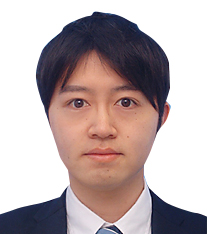
Assistant Professor
Faculty of Engineering
Kyushu University
Outline
Clustring of membrane proteins called Siglec on the cell surface is one of the important mechanism in our immune system. If Siglec molecules can be clustered using synthetic polymer molecules, that would be a novel technique for controlling cellular functions. Therefore, in this study, I aim to synthesize glycopolymers that bind to Siglecs and elucidate how the glycopolymer topology (linear and cyclic structures) affects the clustering of Siglec and the immune response of cells.
Takayuki Niitsu
Spatiotemporal Analysis for Accelerating Molecular and Drug Development in Fibrotic and Cystic Diseases
Grant No.:JPMJAX242F
Researcher
Takayuki Niitsu

Guest Lecturer
Graduate School of Medicine
The University of Osaka
Outline
Understanding the mechanisms of pulmonary fibrosis requires a comprehensive view of the spatial dynamics shedding light on the heterogeneity and commonality among various interstitial lung diseases. This research focuses on the fibrotic niche to establish methods for predicting pulmonary fibrosis. Additionally, multimodal spatial transcriptomics will be performed using human precision-cut lung slices to elucidate the spatial dynamics and drug perturbation mechanisms in pulmonary fibrosis. The established methods will be extended to cystic diseases, aiming to explore novel molecules and develop new drugs.
Akihiro Nita
Ex utero mouse embryo culture reveals developmental robustness in organogenesis
Grant No.:JPMJAX242G
Researcher
Akihiro Nita

Assistant professor
Institute of Integrated Research
Institute of Science Tokyo
Outline
The organogenesis is highly reproducible despite the complexity of the process, which has long been a widely known life phenomenon and is called the developmental robustness. Regardless of this well-known life phenomenon, the underlying mechanisms are still unclear because of the difficulty of manipulating the embryo of viviparous organism during this stage. Therefore, mouse embryos at this stage need to be isolated and cultured outside the mother’s womb. This project aims to unveil the mechanism of developmental robustness in organogenesis through the intercellular communication using ex utero mouse embryo culture system.
Ken Mizuta
In vitro reconstitution of fetal oocyte development in humans
Grant No.:JPMJAX242H
Researcher
Ken Mizuta

Assistant Professor
Graduate School of Medicine
Kyoto University
Outline
In human female germ-cell development, primordial germ cells differentiate into oogonia, which then develop into oocytes during the fetal period, forming primordial follicles, which serve as the source of oogenesis in adults. This project aims to reconstitute the oocyte development process in vitro using human pluripotent stem cells as the starting material. This in vitro reconstitution system is expected to become a critical research platform for elucidating the mechanisms of human germ-cell development, as well as for understanding the etiology of germ-cell-related diseases and developing therapies.
Tomoki Mitani
CWAS Analysis to Profile Comprehensive Neurodegenerative Lesions Towards Integrated Omics
Grant No.:JPMJAX242I
Researcher
Tomoki Mitani
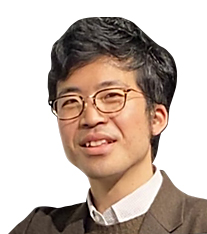
Guest Lecturer
Graduate School of Medicine
The University of Osaka
Outline
Neurodegenerative diseases require early detection and preventive treatment before severe neuronal loss occurs. However, information on when and where lesions appear is limited, leaving many unknown lesions. In this study, we developed a whole-brain cell profiling technique called “CWAS (whole body/organ cellome-wide association studies)” using 3D tissue-clearing imaging to comprehensively identify the timing and location of neurodegenerative lesions at the single-cell level. The integration of this spatiotemporal lesion information with molecular omics will contribute to the identification of target molecules for early diagnosis and treatment.
Moe Yamada
Analysis of the mechanism underlying cell plate formation
Grant No.:JPMJAX242J
Researcher
Moe Yamada

Assistant professor
School of Science
Nagoya University
Outline
The cell plate is a complex intracellular structure formed during plant cytokinesis. While it is known that cell plate formation is driven by the accumulation of vesicles carrying cell plate components, the precise molecular mechanisms underlying this process remain largely unknown. This project aims to elucidate these mechanisms through a combination of cell biological and biochemical approaches.
Yuki Yamanashi
Artificial catalyst-mediated chemical modification for transcription factor activation
Grant No.:JPMJAX242K
Researcher
Yuki Yamanashi
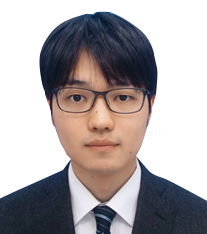
Assistant professor
Graduate School of Pharmaceutical Sciences
The University of Tokyo
Outline
Transcription factors play a central role in regulating of gene transcription and are involved in diverse biological processes. While transcription factors have been therapeutic targets for dieseases because their dysfunction leads to various diseases such as cancer, current methods for controling their activity are limited. In this study, I aim to establish a novel concept of activating tranctiption factors through chemical modification within living cells using artificial catalysts.
Yuya Yoshida
Analysis the mechanism of organ-cell network in the heart with a focus on monocyte GPR68
Grant No.:JPMJAX242L
Researcher
Yuya Yoshida

Assistant Professor
Faculty of Pharmaceutical Sciences
Kyushu University
Outline
Cardiac function and cardiac disease are greatly influenced by the body’s internal clock (circadian rhythm). This study aims to elucidate the relationship between the circadian rhythm of GPR68 expressed on monocytes, a type of leukocyte, and cardiac function, as well as the activation mechanism of GPR68, which is still not fully understood, using biological imaging and cryo-electron microscopy. By systematizing spatio-temporal information on the functions of related tissues and cells and gene expression, we will attempt to develop methods for predicting the pathophysiology of heart failure and therapeutic strategies.













